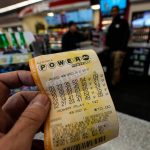Fixed or variable: which car loan will save you money and keep your payments predictable?
Choosing the right auto loan can be a critical decision, affecting your monthly budget and long-term financial health. Understanding how interest rates work and the differences between fixed and variable loans is essential before signing any contract.
What Are Auto Loan Interest Rates?
Auto loan interest rates determine how much you pay in addition to the principal borrowed. Lenders calculate interest based on factors such as credit score, income, and debt levels according to Experian. The interest rate is typically expressed as an annual percentage rate (APR), which also accounts for fees. While the rate is fixed for some loans, it can fluctuate for others depending on market conditions and benchmarks such as the prime rate.
Fixed-Rate vs. Variable-Rate Car Loans
When financing a vehicle, borrowers often encounter two main types of loans: fixed-rate and variable-rate. Fixed-rate loans charge the same interest for the entire term, providing predictable monthly payments. Variable-rate loans have interest rates that can change periodically, typically tied to an underlying index like the prime rate.
Fixed-rate loans are generally better suited for borrowers who value consistency. Your payment stays the same throughout the loan term, which simplifies budgeting. Variable-rate loans may offer a lower starting rate, but the monthly payment can increase if interest rates rise. Short-term borrowers might benefit from lower initial payments, while long-term borrowers face more exposure to rate fluctuations.
How Fixed-Rate Car Loans Work
A fixed-rate car loan has a set interest rate for the duration of the loan, usually between 36 and 84 months. Lenders use risk-based pricing to determine rates, considering your creditworthiness and financial profile. Because the rate does not change, borrowers can easily forecast monthly payments, plan their budgets, and protect themselves from market volatility.
Pros of Fixed-Rate Loans:
-
Predictable payments make budgeting simple.
-
Protection from rising interest rates over time.
-
Widely available from banks, credit unions, dealerships, and online lenders.
Cons of Fixed-Rate Loans:
-
Initial rates may be higher than variable loans.
-
Borrowers cannot benefit if market rates fall during the loan term.

Receiving the keys marks the final step in buying a car, whether financed through a loan or paid in full.
How Variable-Rate Car Loans Work
Variable-rate loans start with an interest rate tied to a benchmark that can adjust periodically. Your monthly payment may go up or down depending on market conditions. Lenders determine your initial rate using the prime rate, your credit score, and other factors.
Pros of Variable-Rate Loans:
-
Lower starting rates can save money if paid off quickly.
-
Many variable loans include a rate cap, limiting the maximum possible interest.
Cons of Variable-Rate Loans:
-
Payments can rise unexpectedly, increasing total interest.
-
Introductory rates may expire, leaving borrowers with higher long-term costs (source: Experian Automotive Finance Report).
Real-World Cost Comparison
To understand the financial impact, consider a $41,572 auto loan over 60 months. At a fixed rate of 6.35%, your monthly payment would be about $810, totaling roughly $48,629 including $7,057 in interest according to Edmunds. With a variable rate starting at 5.35%, your initial payment is lower at around $791 per month. However, if rates rise to an average of 7.35%, the total cost climbs to approximately $49,803—$1,174 more than the fixed-rate loan.
Factors to Consider When Choosing a Loan
Risk Tolerance: Fixed-rate loans suit borrowers seeking stability. Variable-rate loans are for those comfortable with potential fluctuations and capable of paying off their loan early to minimize interest.
Interest Rate Environment: Locking in a fixed rate is often advisable during rising rate periods, whereas variable rates may be advantageous in a declining interest rate market.
Loan Term: Longer terms lower monthly payments but increase total interest. Calculating the full cost—including APR, fees, and loan duration—is crucial before deciding.
People Also Ask
Can I switch from a variable-rate to a fixed-rate auto loan?
Yes, some lenders allow refinancing to lock in a fixed rate if market conditions change. Refinancing may involve fees, so weigh the costs against potential interest savings.
Does my credit score affect whether I get a fixed or variable rate?
Absolutely. Higher credit scores typically qualify for lower interest rates on both fixed and variable loans, improving affordability and saving money over time.
Are variable-rate loans safe if I plan to pay off my car quickly?
Generally, yes. Short-term variable loans can reduce initial payments, but you must remain aware of rate changes and ensure you can handle potential increases.
Do all lenders offer both fixed and variable options?
Not all. Some banks, credit unions, and online lenders specialize in fixed rates, while variable-rate loans are less commonly available but may be offered through select financial institutions or dealerships.
Conclusion
Choosing between a fixed-rate and variable-rate auto loan ultimately depends on your financial priorities, risk tolerance, and the state of interest rates. Fixed-rate loans offer consistency and predictability, making them ideal for most long-term borrowers. Variable-rate loans may provide short-term savings but carry the risk of rising payments. Carefully analyzing monthly budgets, loan term lengths, and total cost projections can help you secure the auto loan that best fits your financial situation.
By understanding the nuances of both loan types, you can make informed decisions, avoid costly surprises, and drive away in your new car with confidence.















